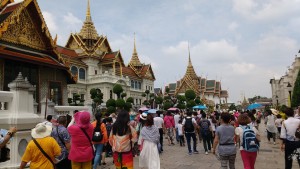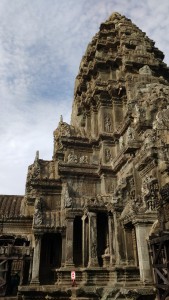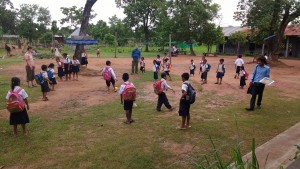Having never left the United States before, learning to live and work in Phnom Penh, Cambodia on my own was an opportunity of a life time. I have learned more about myself in the past three months than I would have ever imagined I could in my four years at the University of Oregon. I was given numerous opportunities throughout the duration of my internship that allowed me to fall in love with the country, the culture and the people, as well as learn about a whole new part of myself in the process.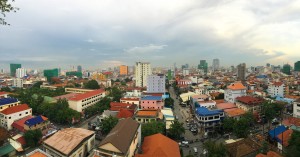
I arrived at Sovann Komar Children’s village on the first day of my internship with my roommate Ruth, the schools English teacher. The school day was already in full swing as our bus regularly got us to school half an hour after class started. I spent my first day shadowing Ruth, and touring the school. The children were all very excited to meet me and the held my hands as I walked through the school all the while chattering away about different things that I wasn’t faintly familiar with yet. By the time lunch came I was overwhelmed by the generosity and hospitality that the village offered to me. The staff was very supportive and grateful for my presence from the very beginning. Although It was overwhelming and stressful to be alone in a new country, I was immediately accepted into the community at Sovann Komar and at the time there was no better feeling in the world.
With the help of teachers and staff at Sovann Komar I began to settle into my new surroundings and learn how to appreciate the more relaxing culture that exists in Southeast 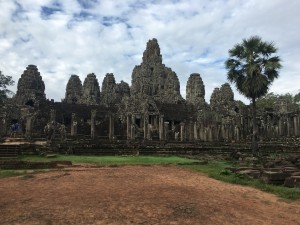 Asia. I found it very hard at first to transition from my busy American student life to a more flexible professional environment. However, as the summer wore on I began to adapt and replicate their culture in my own daily routine until I was able to let my organization and time management skills rest to appreciate all that was available to me in the moment at the village.
Asia. I found it very hard at first to transition from my busy American student life to a more flexible professional environment. However, as the summer wore on I began to adapt and replicate their culture in my own daily routine until I was able to let my organization and time management skills rest to appreciate all that was available to me in the moment at the village.
For the majority of my time in the village I taught various classes for about six hours a day. I created and taught two lesson plans; one that focused on animals and one that focused on multiculturalism and diversity. Teaching came with its own set of challenges, language barriers were one obstacle that I continuously worked to overcome. I learned how to effectively work through and adapt to cultural barriers that I have never been exposed to before. As a human service professional, this skill will be very applicable as I continue to work with vulnerable populations. After teaching for eleven weeks, I was also able to leave the two curriculum packets that I developed for the school to continue teaching.
 I was fortunate to have my weekends free to adventure around the country and learn more about the rich history that exists in Cambodia. One of my most memorable trips was when I took a bus six hours north to Siem Reap to visit the Angkor Wat temples. I spent two days wandering in and out of the largest religious monuments in the world, observing gigantic intricate pieces of stone that were quite possibly older than anything I had ever seen before. I was amazed at how beautiful and individual each temple was, it really signified why they call Cambodia the Kingdom of Wonder.
I was fortunate to have my weekends free to adventure around the country and learn more about the rich history that exists in Cambodia. One of my most memorable trips was when I took a bus six hours north to Siem Reap to visit the Angkor Wat temples. I spent two days wandering in and out of the largest religious monuments in the world, observing gigantic intricate pieces of stone that were quite possibly older than anything I had ever seen before. I was amazed at how beautiful and individual each temple was, it really signified why they call Cambodia the Kingdom of Wonder.
I was able to learn and grow personally and professionally in a way that I have never had the opportunity to before. I think about my community at Sovann Komar often and will be forever grateful for the gratitude they showed me during my stay. I no longer feel limited by my lack of travel knowledge. Through this trip I was able to gain confidence in myself as a teacher, traveler, and individual, and although thi s may have been my first international trip I know that it will not be my last.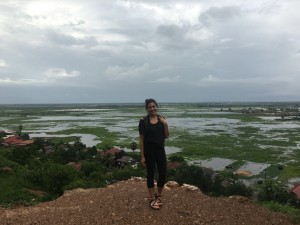
-Chelsea Kimura, Summer 2016
